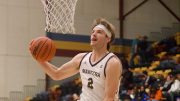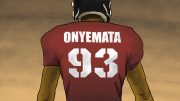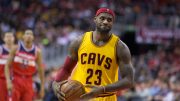The NCAA’s March Madness is an event like no other in sports. There are countless stories, rivalries, and upsets. Ask basketball fans whether they prefer the NBA or March Madness and most will chose the amateur tournament in a heartbeat.
The NCAA tournament produces some of the fiercest athletic competition of the year. To the men and women playing in the tournaments, these games are often their last chance to play for glory and they will do whatever they can to capitalize on that opportunity.
The NBA implemented an age limit, during 2005’s collective bargaining agreement, which declared that at least one NBA season must have occurred since the player’s graduation from high school in order for them to be draft eligible. One factor the league cited for the limit is the prevention of high-school all-stars from becoming instant busts once they hit the pros.
There was a concern that this rule would not only affect the NBA but also the NCAA, as there were now going to be players in college who genuinely did not want to be there and were looking to leave for the NBA as quickly as possible. These players, often the most talented and highly recruited, would have no reason to play for the team because their motivation came not from playing to win the championship, but from wanting to be drafted as high as possible.
Looking at the list of 39 players who have made the jump to the NBA after their freshman year in college, five of those players were coached by Ohio State’s Theo Matta and another eight, players such as Derrick Rose, Tyreke Evans and John Wall, have been coached by Kentucky’s John Calipari.
This season, Calipari’s 13-man roster consists of six freshmen. Calipari is prepared to possibly lose five of them to the NBA draft, depending on where the team finishes in the tournament.
The last one-and-done player to lead his team to the NCAA championship was Carmelo Anthony in Syracuse’s 2003 run — before the rule was implemented. Teams consisting of mostly one-and-done players have come close to winning the NCAA championship, but have consistently been stopped by teams that have been together for longer.
For example: in 2007 the Florida Gators won the championship for the second time in as many years, beating Ohio’s State’s one-and-done duo of Greg Oden and Mike Conley Jr., with their core of returning players — Al Horford, Joakim Noah, and Corey Brewer. Although many NCAA purists were criticized for overreacting when the age limit rule was created, they seem to have had valid cause for concern. It’ll be interesting to see if this trend will reverse itself if the NBA owners get their wish and the age limit is raised once again.
illustration by devon kerslake




